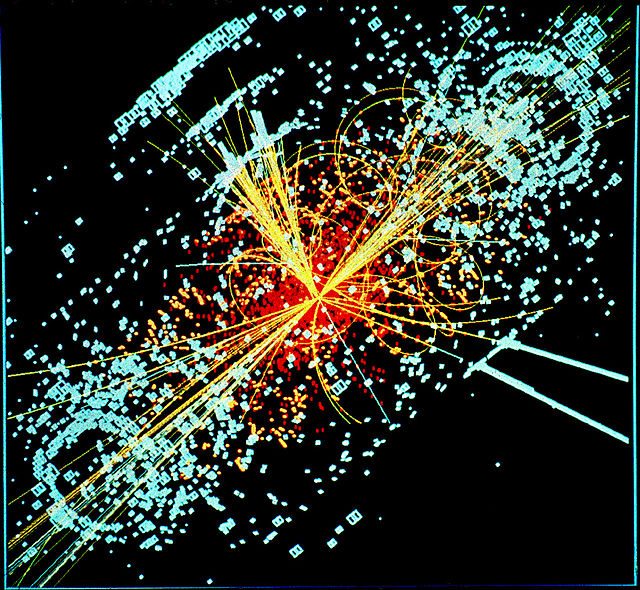The secret world of particle physics
Recently I’ve had a lot of exposure to the strange and mysterious world of particle physics. Like a good student I jumped on the available ‘Intro To Particle Physics’ module in term two and actually managed to get myself a spot on a trip to CERN – one of the key players in modern particle physics. So what better a time to share with you a little history of the subject and some insight into what these scientists are trying to achieve!
The term ‘atom’ comes from the Greek word atmos which literally translates to ‘indivisible’. Despite coming up with this useful word, the Greeks actually made very little progress in discovering the structure of matter. In fact, we must skip ahead to 1897 when J.J. Thompson discovered the electron. Through a series of clever experiments with cathode rays he managed to show there existed particles of energy which where 2000 times smaller than anything else known at the time. What followed was a storm of progress: alpha, beta and gamma radiations were all studied, Einstein suggested another radical particle: the light particle or ‘photon’ and then finally in 1911 Rutherford discovered the nucleus, shattering the Greek-inspired indivisible model of matter.
Once it was clear that atoms could be broken up into these smaller and smaller components, scientists began to search for ways to see exactly how far they could be broken down. At first much of this kind of research was done looking at cosmic rays which are produced naturally – such decays allow at least some study into the nature of the fundamental components of matter, but us physicists need repeatable and on-demand measurements and thus the particle accelerator was born.
Generally these colliders fall into two main categories: linear and circular, with most of the current high-energy accelerators being circular. The basics of particle acceleration is actually deceptively simple: using a series of magnetic and electrical fields, you can steer a beam of interesting particles around your collider and then at the right time and speed crash them together. The aim of this high-momentum collision is to release the energy contained by the particles and use it to create new massive particles. This transition from energy to mass may seem surprising but it is a logical consequence of Einstein’s famous equation E = mc2.
Apart from the abstract theoretical advantages of building and using such machines, what use do they serve in our everyday lives? After all, particle physics research is notoriously expensive and requires huge amounts of input from scientists who could theoretically be fixing global warming instead! Particle physics has many promising research benefits – anti-matter in particular is brimming with potential in cancer treatments (minimizing cell damage whilst pinpointing cancerous cells) and theoretically as a super-fuel capable of releasing enormous amounts of energy.
So, what does the future hold for particle physics? The current big thing is the study of the Higgs boson which is a particle related to the process by which other particles gain mass. Its existence was only confirmed experimentally in 2012 and there is great interest in future studies of its properties. There is currently talk of new collider plans to allow physicists to produce higher and higher energy collisions- China is rumoured to be planning an 54-100km collider in the near future, dwarfing CERN’s 27km collider and also a international linear accelerator of length around 30-50km. I suppose only time will tell whether these things are just hearsay or perhaps we could be at the cusp of the next golden age of particle physics research.

Comments